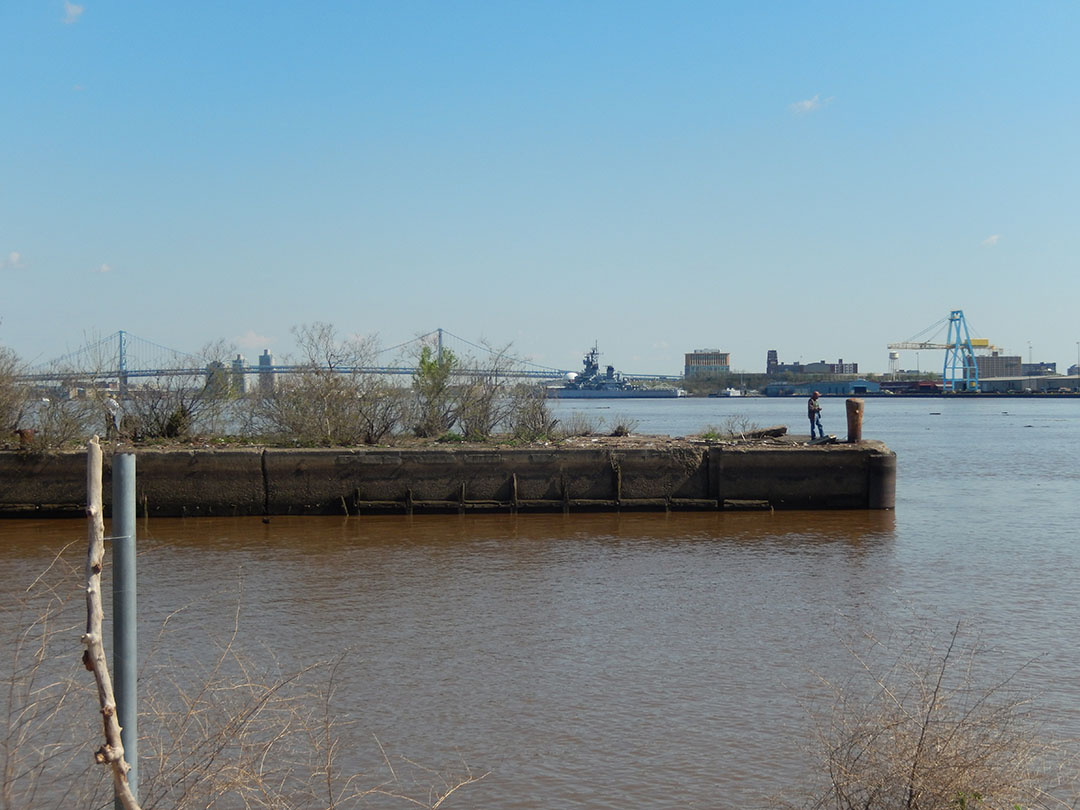
Initial repairs for South Philadelphia’s Pier 68 are to begin shortly.
The pier, located behind the Wal-Mart on Columbus Boulevard in Pennsport, is to receive a major renovation. The project will transform the centurys old pier from an abandoned slab of concrete and wood into a new fishing dock and green space.
Part of the Delaware Waterfront Corporation’s Master Plan, the renovation of Pier 68 is part of a much larger scheme to transform the area into a 30-acre wetland park. Developers have been working closely with the community, as well as city agencies such as the Philadelphia Art Commission, Philadelphia Water Department and Parks and Recreation in the design of the pier.
The project is expected to get underway at the beginning of the summer. The original plan for Pier 68 was to have it done by fall. However, after a boat crashed and damaged the end of the pier, it will most likely have to wait until next year.
“Right now what we’re working on is the assumption that we’re going to start the structural repairs over the summer, have most of that work done toward the middle of August, hopefully, and then come back next spring or summer to do some of the topside work and develop the park on top,” Bryan Hanes, lead architect on the development of Pier 68, said. “That’s really based on the availability of funding to get it all done.”

Structural repairs to the weathered pier are expected to cost roughly $1 million. The money is coming from multiple sources, including $500,000 from the William Penn Foundation, $250,000 from the City of Philadelphia and another $250,000 from the Commonwealth of Pennsylvania.
Architects at Studio Bryan Hanes, who were chosen by the DRWC to oversee other waterfront projects such as the Penn Treaty Park and Pier 68, have noticed that there are specific things to consider when working along the water.
“I think a lot of people don’t really understand that the Delaware and Schuylkill rivers are tidal,” Bryan Hanes said. “We’ve kind of lost that connection along the waterfront. This is a place where we can really showcase it.”
As with other waterfront projects, such as the Race Street Pier, exactly how to incorporate the water is key. However, Pier 68 offers a stark contrast to the way developers dealt with Race Street Pier.

“The Race Street Pier sits way up off the water, you’ve got big buildings along the side, the Ben Franklin Bridge is right up overhead” Hanes said. “In the case of Pier 68, you walk about a quarter of the way out the pier and all of the sudden you’re in a different world, away from the hustle and bustle of the city. This one sits just a few feet from the water, so you’re really engaged with the water in a different way than you are at Race Street.”
The studio’s other waterfront project on Penn Treaty Park shows how it’s not just the physicality of the location that makes a difference when it comes to development, but also the history of the location itself.
“This one (Pier 68) is a site that was formally industrial,” Hanes said. “Nobody really knows this place as a park. The difference with Penn Treaty is that everyone knows it as a park. It’s been a little harder to engage people and come out to meetings versus Penn Treaty where everybody’s kind of scared that they’re going to lose something they know and love,” Hanes said.
According to the DRWC’s Master Plan, the fishing dock, and eventually the wetland park, will be accessible by a trail along the Delaware River that connects the river wards with South Philadelphia.

Some believe that development for more green space along the Delaware is something that the city has not done a very good job doing until recently. However, there are challenges that face developers.
“I think there’s a lot at stake in the terms of the public realm,” said Brenna Herpmann, a landscape architect at Studio Bryan Hanes. “I think that just having more a cohesive plan and getting with the vested interest in the city on board with trying to make it a more livable asset for the city is a lot of the challenge.”
However, with a few minor drawbacks, the renovation of Pier 68 shows strong signs in its feasibility, as the DRWC’s Master Plan breaks down waterfront renovation into smaller, more achievable pieces than past development plans.
– Video, images and text by Jesse Bellosi and Nicole Soll.


Be the first to comment